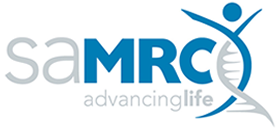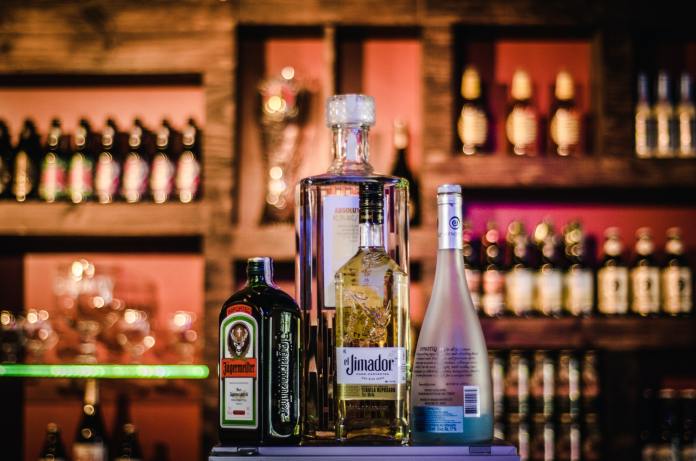These epidemics bring death, despair and tragedy to our households and families. The loss of a young adult – the group most at-risk – translates into a direct loss of livelihoods for families and households and so it is an epidemic that impacts on both lives and livelihoods. Importantly, this is one epidemic that is under our control and is entirely preventable. One of the biggest drivers is alcohol. This has become patently obvious from both data on trauma presentations and non-natural deaths following the imposition of a ban on alcohol sales along with other measures at the start of the level 5 lockdown in South Africa, and when the ban was lifted on June 1 and again re-imposed on 13 July together with a 9 pm curfew. To prevent and control this epidemic we need our citizens, our government and the liquor industry to play ball. It cannot be business as usual.
Alcohol consumption in South Africa is off the charts. Although only 43% of adult men in our country drink and about one in five women, consumption per drinker is so high that per capita consumption, which includes non-drinkers, is higher than most other countries. That is because of the culture of drinking to intoxication, especially over weekends. Adult per capita consumption in grams of absolute alcohol (AA) consumed per drinker is 64.6 g of AA per day – the 6th highest globally according to the World Health Organization (WHO). This is between 5 and 6 standard drinks of 12 g of AA (or 15 ml) per day, and substantially higher than the average for countries in the WHO Afro region (40.0 g/drinker/day) and the global average (32.8 g/drinker/day). Heavy episodic or binge drinking is normative in our country. Almost 6 out of 10 adolescent and adult drinkers engage in heavy binge drinking: 70.8% of male and 33,7% of female drinkers, higher than both the regional and global averages. It is estimated that the amount of people dependent on alcohol in our country are three times more than the average for the WHO Afro region and globally we have the unenviable reputation of falling into the second highest country category.
There are consequences to harmful drinking: liver cirrhosis, road traffic injuries, cancer and also alcohol plays a role in the transmission of infectious diseases and the progression of infectious diseases like TB and HIV. The road traffic fatality rate is more than 33 per 100,000 population – nearly double the global average – and mortuary surveillance data indicate that approximately half are alcohol-related. These deaths are most common at night-time, particularly on weekends and, as most of the deaths are adults, this translates into a considerable loss of livelihood for affected households.
Alcohol kills people across all walks of life in our country, but especially men and people from low and middle socioeconomic levels. In 2015, it was estimated that between 27 000 and 103 000 people in South Africa died because of alcohol – i.e. between 74 and 282 adults per day. In terms of the economic cost incurred by the country, the data is somewhat dated, but it is still possible to make some causal inferences regarding the burden incurred. In 2009 a study was undertaken to assess the cost incurred by provincial and national government from alcohol use. It was found that the direct cost to national and provincial government was R17 billion. At that time the overall income to the government from alcohol in terms of VAT and excise taxes was R16 billion, a net loss of R1 billion – a 6% loss even ignoring additional costs incurred by local goivernment. A second study assessed the cost of alcohol in South Africa more broadly. It found that the direct/tangible economic cost of alcohol was R38 billion, or 1.6% of GDP in 2009. The inclusion of indirect costs such as those relating to premature death, absenteeism, etc. increased the economic costs from alcohol, rose from R246 billion to R281 billion, equivalent to 10% - 12% of GDP.
Gender based violence (GBV) is a particularly vexing problem, with between 25% and 40% of South African women having experienced sexual and/or physical violence in their lifetime. Harmful alcohol use is a well-documented driver of GBV, and drinking, especially binge drinking by men, appears to increase both the frequency and severity of partner abuse. Alcohol’s disinhibitory effect can escalate quarrelling into violence - especially important when couples drink at harmful levels together. Infidelity when drinking and spending resources on alcohol and not household essentials may also trigger for conflict. Problems associated with harmful drinking are inseparably linked to other key drivers of GBV, namely gender inequitable masculinity, poverty, depression and childhood trauma. Among women survivors of GBV there is a bi-directional relationship with alcohol: poor mental health and alcohol problems place women at increased risk of being subjected to GBV and women survivors are more likely to have poor mental health and problems with alcohol use.
The level 5 lock-down which included both a prohibition on alcohol sales and a curfew presented the country with a natural experiment. For those of us who have an obsession with tracking mortality, got the surprise of our lives: unnatural deaths plummeted, providing us with evidence that alcohol control coupled with a curfew was a significant intervention to control un-natural deaths in our country. This significant impact was reversed when alcohol sales were allowed and people could move about at night. The decline in unnatural deaths has again occurred following the recent temporary ban on alcohol and the re-introduction of a curfew.
This intervention has taught us that South Africa needs to introduce strategies to reduce the harmful use of alcohol. This will save both lives and livelihoods.
Our recommendation is that South Africa be informed by the best available evidence, such as that reflected in the 2010 WHO Global Strategy to Reduce Harmful Use of Alcohol, the WHO NCD Global Action Plan 2013-2020, the WHO SAFER initiative (2019), Alcohol No Ordinary Commodity (2010), Alcohol Policy in Developing Societies (2000), Effectiveness and cost-effectiveness of policies and programmes to reduce the harm caused by alcohol (2009), Are the “Best Buys” for alcohol control still valid? An update on the Comparative Cost-Effectiveness of Alcohol Control Strategies at the Global Level (2018), Alcohol Policy and Public Health in South Africa (1998), and Do alcohol control policies work? An umbrella review and quality assessment of systematic reviews of alcohol control interventions (2006-2017) (2019).
While there is often pessimism that much can be achieved, one just has to look to how Russian turned around declining mortality from 2002 using among other things a basket of alcohol control measures. These included gradually raising taxes on alcohol; introducing a minimum unit price policy on vodka as far back as 2003, and then increasing the minimum price over the years, before expanding this policy to other alcoholic beverages; introducing a real-time tracking system on the production and sale of alcohol; beginning a comprehensive night ban on off-premise sales of alcohol nationally, with even stricter availability in some regions; as well as strict policies on alcohol-free public space, and on alcohol marketing.
We propagate the SAFER strategy currently being promoted by WHO:
-
S: Strengthen restrictions on alcohol availability.
-
A: Advance and enforce drink-driving counter measures.
-
F: Facilitate access to screening, brief interventions and treatment.
-
E: Enforce bans or comprehensive restrictions on alcohol advertising, sponsorship and promotion.
-
R: Raise prices on alcohol through excise taxes and pricing policies.
The table below sets a number of specific interventions for South Africa to consider implementing in the short, medium and long terns as it seeks to chart a new way forward for alcohol. The first five tally with the SAFER measures proposed by WHO with an additional measure as it has become patently obvious that we need to have more reliable data on, that is alcohol-related trauma admissions. This is to have a measure of how well we are making progress in terms of turning this around.
| Area | Strategy |
|
Availability (S) |
|
|
Drink-driving countermeasures (A) |
|
|
Screening and brief interventions (F) |
|
|
Restrictions on advertising and packaging (E) |
|
|
Increase the low price of alcohol (R) |
|
|
Better surveillance |
|
In conclusion, South Africa needs a clear, multi-sectoral national plan to guide action going beyond DTI’s Liquor Policy (2016). We need competent and empowered leadership to drive the plan and we need to ensure the plan is properly funded. Good monitoring and evaluation mechanisms are also required to evaluate the impacts of action taken and they need to be linked to good reporting mechanisms to demonstrate accountability and to take the public along.
We should also consider setting up a Health Promotion and Development Foundation using funds from sugar, tobacco and alcohol taxes to support roll out of any alcohol action plan. The Thai Health Promotion Foundation is a good example of such a supporting mechanism accountable to government, but with some autonomy to assist in the rollout of a national alcohol strategy. Above all, there needs to be much more urgency in addressing the burden of alcohol than has been demonstrated to date.
While the industry has a role to play in supporting the government to reduce harmful drinking it is imperative that Government takes the lead in putting an effective regulatory control mechanisms in place. This means adopting best practice interventions for harm reduction including the currently stalled National Draft Liquor Bill and the Control of Marketing of Alcoholic Beverages Bill.
The industry needs to move away from its role as a commercial determiner of ill health and align itself to a new harm reduction paradigm. This will necessitate a reduction in an overall consumption as the country moves away from the current pattern of risky drinking. The industry needs to distance itself from the aggressive lifestyle marketing. This characterized the current business model for the beer industry that depends on a large proportion of drinkers engaging in heavy episodic drinking (given the size of the beer market), the distribution of 70-80% of beer products through unlicensed outlets, and the marketing and sale of alcohol in larger containers (like 750 ml and now 1 liter beers) that encourage sharing and have been linked to HED. The alcohol industry must support the notion not to perpetuate harmful drinking patterns and put people before profits.
South Africa has a unique opportunity to create a safer drinking environment. We should not squander it.
Professors Glenda Gray, Charles Parry and Richard Matzopoulos
South African Medical Research Council

